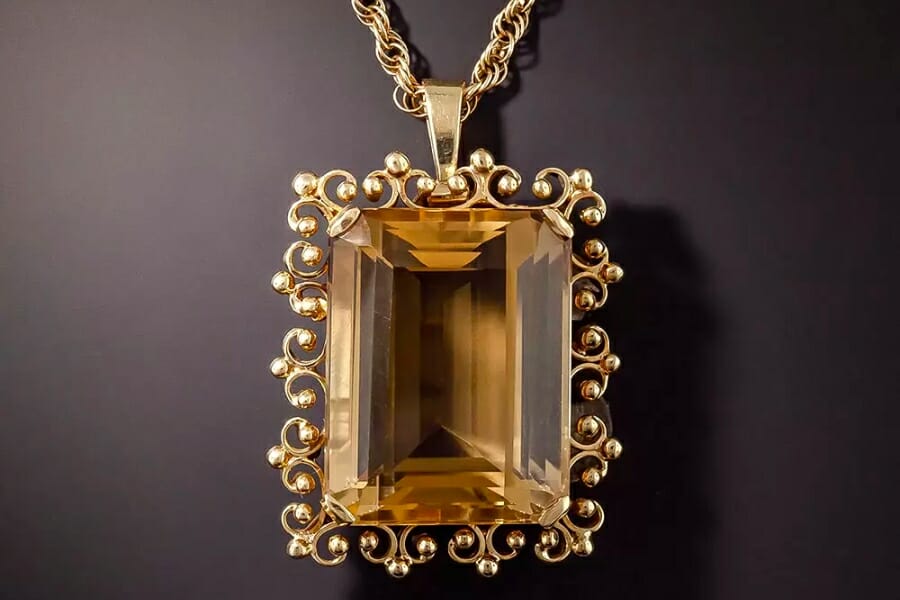Looking for a gemstone that’s as warm and inviting as a cup of cocoa on a chilly day? Look no further than Citrine! With its amazing earth-tone hues and its sparkling shine, this gem is like a little ray of sunshine in a jewelry box.
But Citrine’s value goes beyond just its good looks. This gemstone is believed to bring a sense of abundance and positivity to its wearer, making it a great choice for anyone in need of a little boost. Plus, it’s said to promote creativity and self-confidence, making it a must-have for artists, writers, and dreamers of all kinds.
Curious about just how much Citrine is worth and the price you can get for yours? Read on to discover about the fascinating characteristics and properties that make this gemstone truly valuable.
What Citrine Is
Imagine you’re walking through a forest of golden trees, leaves crunching beneath your feet. Suddenly, a glittering gem nestled in a bed of moss catches your eye. That is how eye-catching the beauty of Citrine is.
Citrine is a variety of quartz mineral that’s often found in Brazil. It gets its color from traces of iron in its crystal structure. It’s a popular gemstone for jewelry, often used in earrings, necklaces, and rings.
Citrine ranges in color, and with these different hues come different price tags.
Madeira Citrine
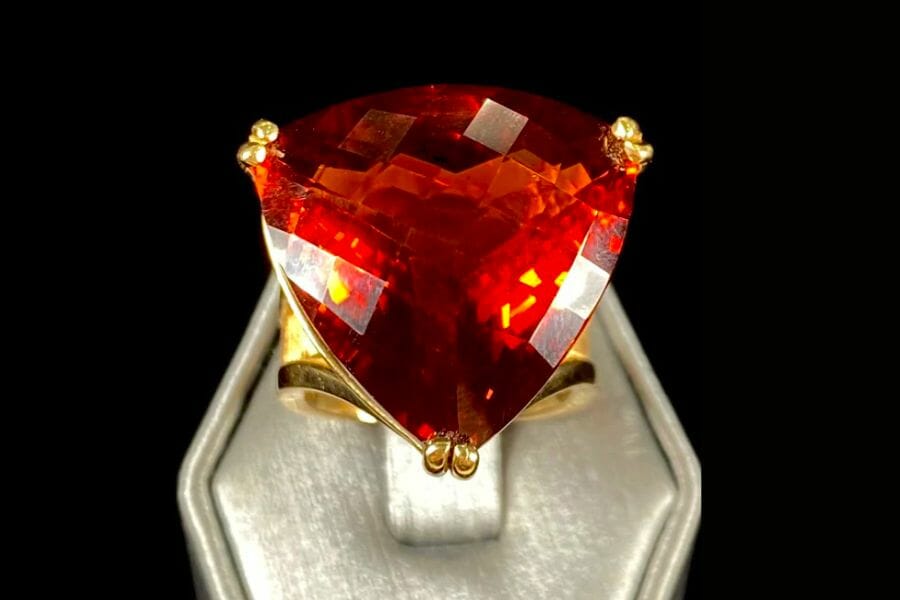
With its hues ranging from red to deep orange with occasional brownish color, Madeira Citrine resembles the rich and warm hues of the Madeira wine. Its name comes from the Portuguese island of Madeira, famous for its wine production and the similarity in color of the wine to this color of Citrine.
Often found in Brazil, Madeira Citrine is also called the “burnt citrine” due to its rich and warm color that can be reminiscent of the sunset. It’s highly valued and sought after in the jewelry industry for its unique and vibrant color.
It’s often used in high-end jewelry designs, and it can be found in various shapes and sizes, from small accent stones to large centerpieces. It’s one of the more interesting colors of citrine and is easily identified.
How much is Madeira Citrine worth
Madeira Citrine’s price is the highest among the different colors of this gemstone. Per carat, a faceted Madeira Citrine sells at $20 to $140.
Orange Citrine
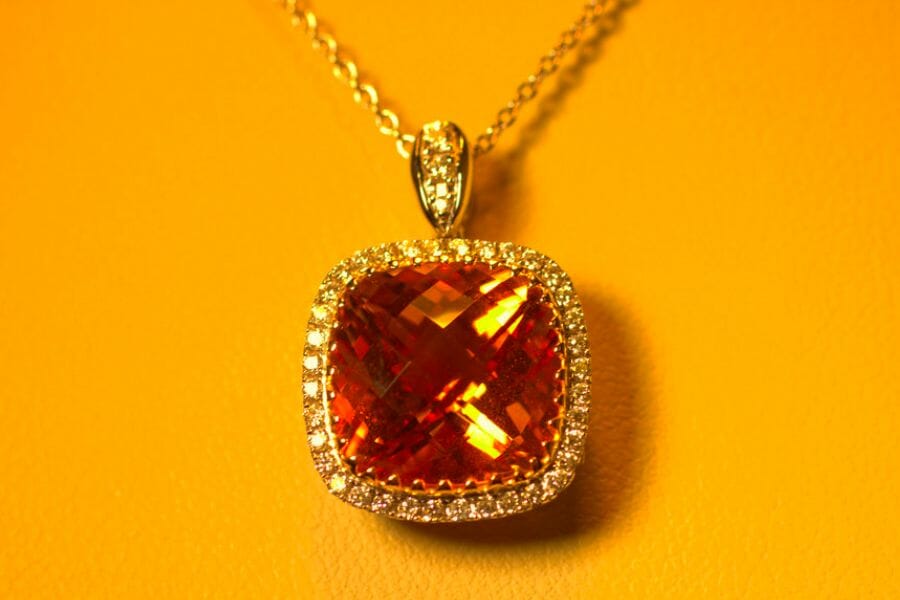
This Citrine has a vibrant orange color, ranging from light peach to deep reddish-orange hues. Orange citrine is a popular choice for jewelry due to its warm and cheerful color that can add a pop of brightness to any outfit. It’s also often used in autumn-themed jewelry or as a birthstone for November.
Orange citrine is believed to have several healing properties, including promoting creativity, motivation, and self-expression. It’s also thought to help with emotional balance and confidence, making it a gemstone that’s often associated with positivity and joy.
How much is Orange Citrine worth
This Orange variety is considered in the mid-range when it comes to Citrine’s prices. Currently, a carat of this gemstone that’s faceted sells at $7 to $45.
Yellow Citrine
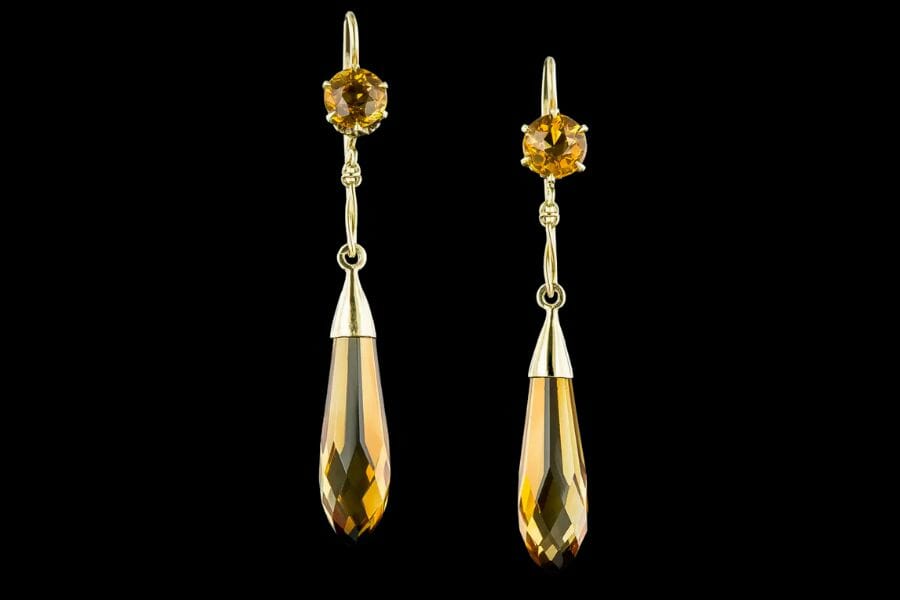
With its soft, sunny yellow color that can complement a variety of skin tones and outfits, it’s no surprise that Yellow Citrine is a popular choice for jewelry. This color of Citrine is often found in Brazil, but can also be found in places such as Spain, Madagascar, and the United States.
Like the orange color, Yellow Citrine is believed to have a myriad of metaphysical properties, too. It’s said to promote success, prosperity, and abundance, and to attract positive energy and good luck.
How much is Yellow Citrine worth
Yellow Citrine’s value isn’t exactly like its orange counterpart. Its faceted sample tends to sell for $8 to $25 per carat, while a yellow to orange cabochon sample starts to sell a bit lower at $5 to $25 per carat.
Gold Citrine
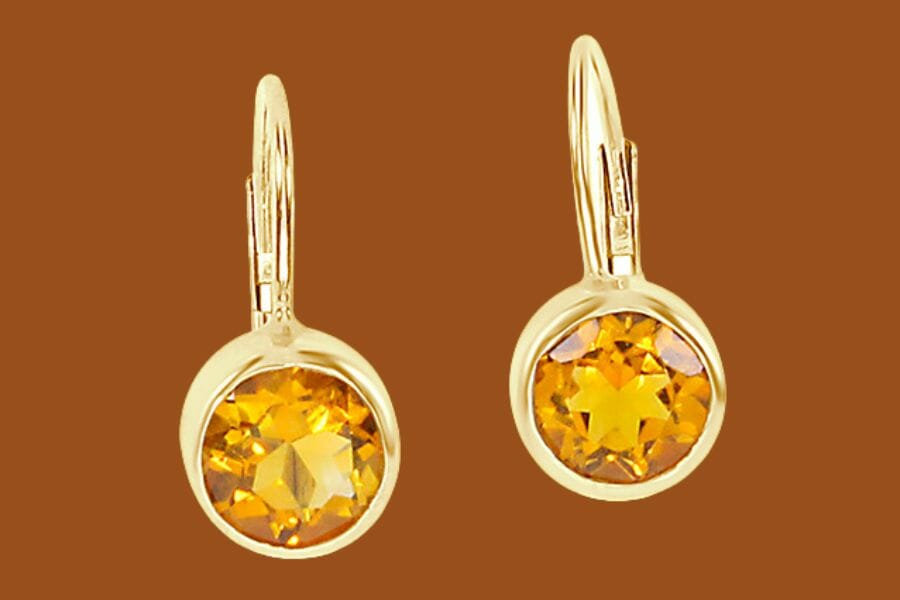
In contrast to the yellow type, a Gold Citrine has a deep golden-yellow color, resembling the hue of pure gold. While it’s often found in Brazil, it has also been found in other parts of the world like Spain and Madagascar.
Just like the mineral gold, Gold Citrine adds a touch of luxury to any outfit, making it highly valued and sought after in the jewelry industry. Like the Madeira Citrine, the Gold variety is often used in high-end jewelry designs, such as engagement rings, necklaces, and earrings. It’s also said to promote self-confidence, creativity, and mental clarity, and to attract success and abundance.
How much is Gold Citrine worth
Despite its glamorous appeal, Gold Citrine sells the lowest among the colors of this gemstone, with a faceted sample selling at $3 to $20 per carat.
Ametrine
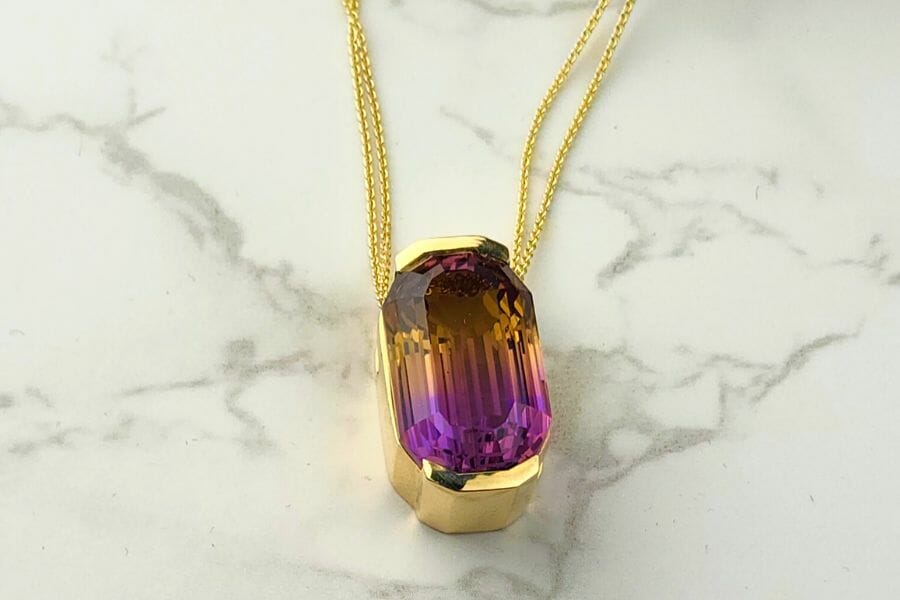
Ametrine combines two different types of quartz minerals: Amethyst and Citrine. It’s a bi-colored gemstone that has a beautiful blend of purple and yellow hues, with distinct color zoning that separates the two colors.
This type of Citrine is found in Bolivia, and its distinctive coloration is due to the presence of iron in its crystal structure. Its unique and eye-catching color make it Ia popular choice for jewelry.
How much is Ametrine worth
Because it’s usually available in large specimens, Ametrine’s price isn’t affected by its size. Its current value is at $4 to $12 per carat.
Why Citrine Is So Expensive
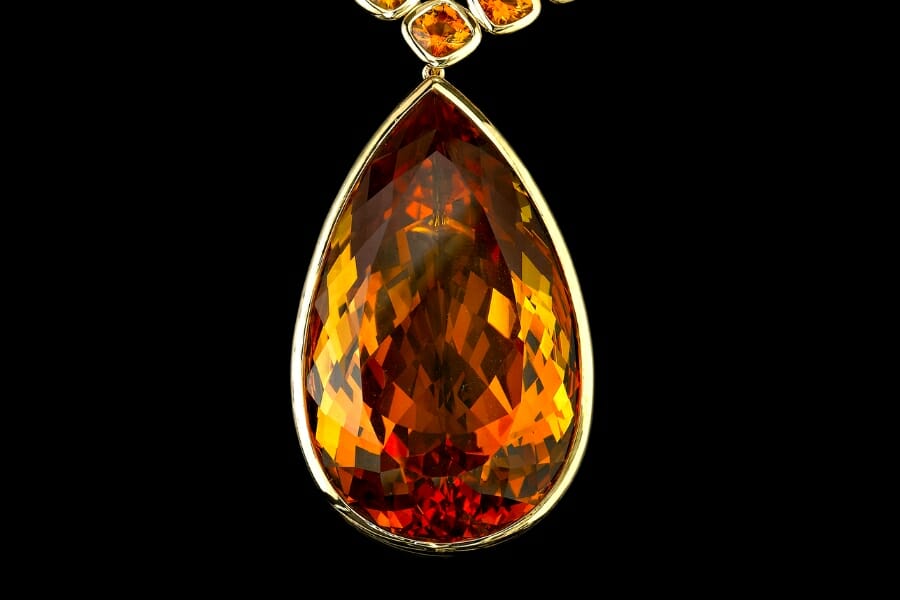
Throughout history, Citrine has been highly valued. Aside from its warm and vibrant color that has made it a popular choice for jewelry, it’s also believed to have many positive properties that make it more appealing than it already is. But why is this gemstone so expensive? Let’s dive into the details and find out.
First of all, Citrine is a relatively rare gemstone. While it’s often found alongside other types of quartz minerals, high-quality Citrine can be difficult to come by. The best gemstones are typically found in Brazil, where they’re mined from deep within the earth. This means that the cost of mining, cutting, and polishing Citrine can be high, which is reflected in the price of the final product.
This gemstone is also believed to have many positive properties— it’s said to promote success, abundance, and creativity, and to attract positive energy and good luck. This makes it a popular choice for those seeking a gemstone that’s not only aesthetically pleasing, but also spiritually beneficial as well.
The unique qualities of Citrine make it a worthwhile investment, so next time you see a beautiful Citrine ring or necklace, you’ll know why it’s worth the price tag!
How To Determine The Value Of Citrine
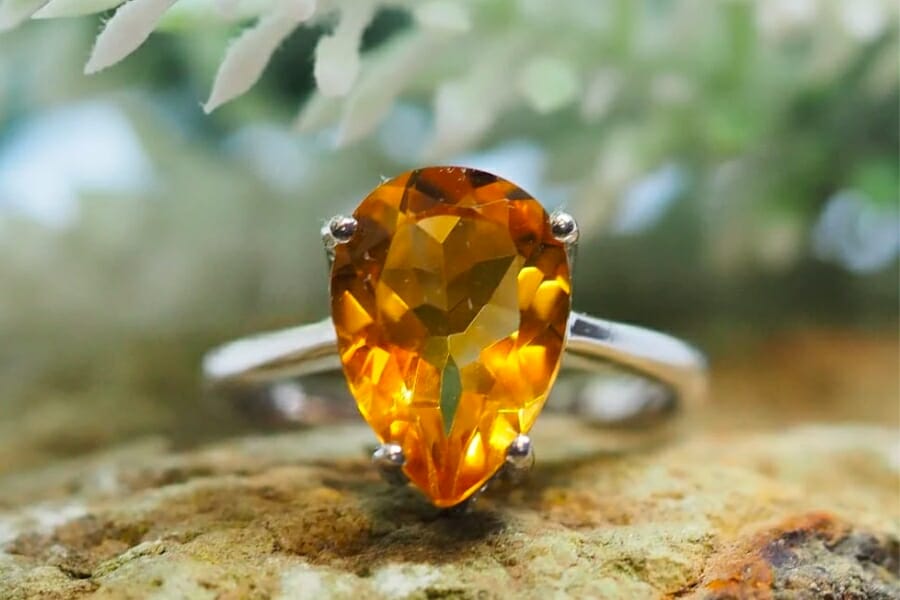
Several factors contribute to Citrine’s value. Let’s explore each of these in more detail:
Color
High-quality Citrine has a warm and vibrant color that’s often compared to the color of sunshine. This color is due to the presence of iron in the crystal structure of the gemstone, and it’s highly valued by jewelry designers and collectors.
The intensity and saturation of the color can vary depending on the quality of the gemstone, with more vibrant and saturated colors being more valuable.
Clarity
The clarity of the Citrine is a crucial factor in determining its price. High-quality or clear samples should be transparent and free from inclusions or blemishes that can affect its clarity and overall appearance. The better the clarity, the more valuable the Citrine.
Treatment
Citrine is often heat-treated to enhance its color and remove any impurities. Heat-treated samples are still considered natural, but the extent of the treatment can affect its price.
In general, untreated Citrine is generally more valuable than treated ones, but the quality of the treatment can also affect its price.
Market Demand
When there is a high demand for Citrine in the market, its price tends to go up and vice versa. This demand can be influenced by several factors, including fashion trends, cultural preferences, and the availability of the gem.
For instance, if a popular celebrity owns and wears a Citrine piece of jewelry (like when Angelina Jolie donated her Citrine necklace to the Smithsonian Museum), it may increase the demand for it in the market, which could drive up its price.
Cut
The cut of the Citrine also plays a role in its price. A well-cut sample will have good symmetry, excellent proportions, and a smooth surface that enhances its brilliance and color.
Carving and Craftsmanship
Related to cut, the craftsmanship and carving also have significant impact on Citrine’s price. Skilled lapidaries and jewelers can transform raw Citrine into stunning pieces of jewelry or intricate carvings, adding value to the gemstone.
The more rare, complex, and detailed the carving or jewelry design, the higher the price will be.
Type
There are three types of Citrine: Natural, Heat-treated, and Synthetic. Natural citrine can be more expensive than the rest of the types due to its rarity. Heat-treated ones, on the other hand, have enhanced color and clarity. Compared to the natural one, it’s less expensive due to its availability and the fact that it is not a rare occurrence. Lastly, Synthetic Citrine, which is lab-created and designed to imitate natural Citrine, is the least expensive type.
Carat and Size
As with other gemstones, the cost of mining larger Citrine is higher, so this will likely affect its price. However, since Citrine is usually found in large samples, its price per carat doesn’t increase as much for large ones.
Sources
While Citrine is found in many parts of the world, some locations are known for producing higher quality or more rare specimens, which can command a higher price.
For example, the state of Rio Grande do Sul in Brazil is particularly renowned for producing high-quality Citrine, which are more expensive than those from other locations. Madagascar and Zambia also produce this gemstone, but the quality and quantity of these specimens may vary, which can impact the price.
Citrine Price By Color
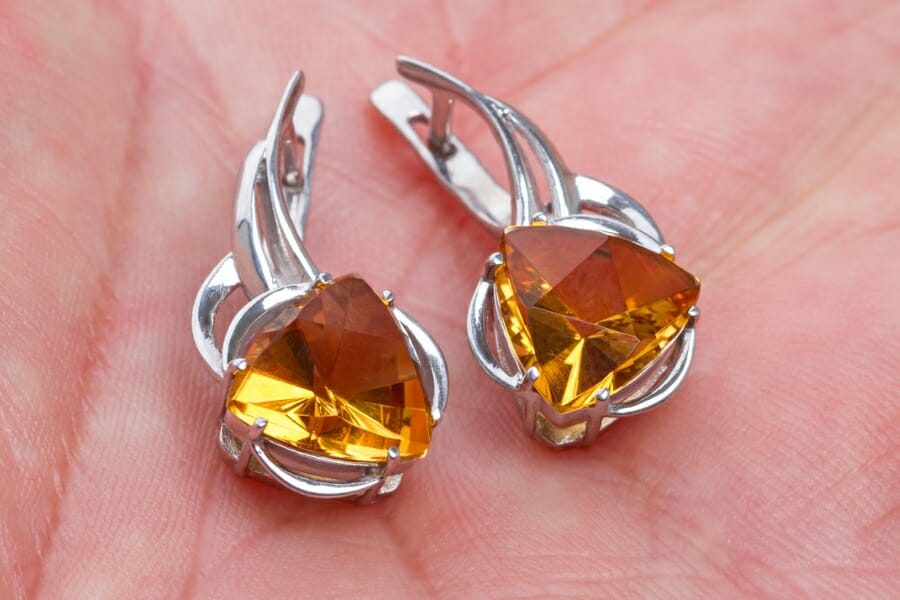
Not all Citrine is created equal, and its price can vary depending on its color. In fact, color is one of the most important factors in determining Citrine’s value, with darker and more saturated hues generally commanding higher prices.
To give you a clearer picture of just how much Citrine is worth, here’s a table containing its current market prices.
Citrine values by color
| Color | Cut | Price (Per Carat) |
| Madeira Citrine | Faceted | $20 – $140 |
| Orange Citrine | Faceted | $7 – $45 |
| Yellow to Orange Citrine | Cabochon | $5 – $25 |
| Yellow Citrine | Faceted | $8 – $25 |
| Gold Citrine | Faceted | $3 – $20 |
| Ametrine | Any | $4 – $12 |
Indeed, the color of a Citrine has great influence on the price it commands. To have a little fun, let’s look at how much exactly Citrin is worth in different units of measurement.
Citrine pricing by unit of measurement
| Measurement | Price |
| A carat of Citrine | $3 to $140 |
| A gram of Citrine | $15 to $700 |
| An ounce of Citrine | $425 to $19,845 |
| A kilogram of Citrine | $15,000 to $700,000 |
| A pound of Citrine | $6,804 to $317,514 |
| A ton of Citrine | $13,607,775 to $635,029,500 |
The Most Expensive Citrine
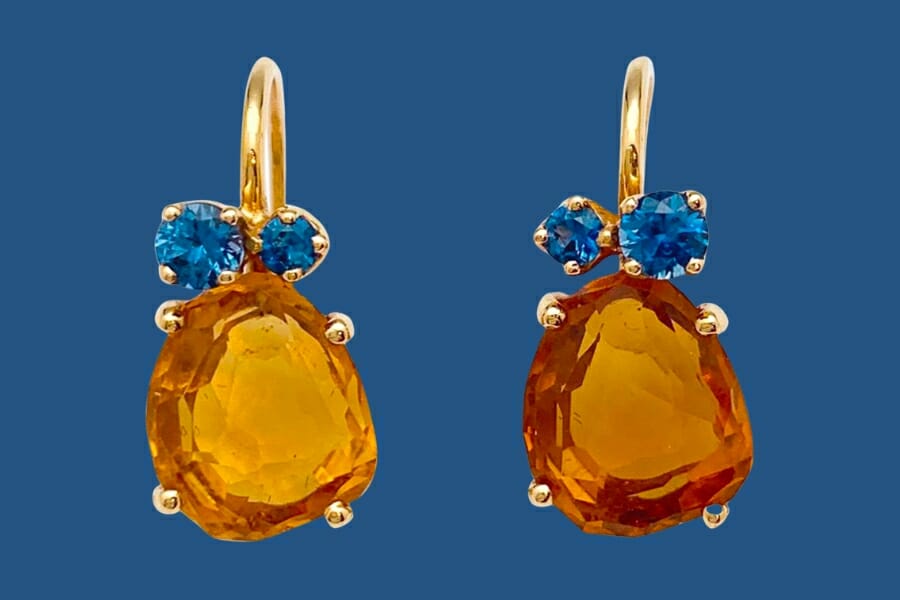
There is no official data on the most expensive Citrine ever sold, as the value of this gemstone fluctuates over time. However, there are some notable Citrine specimens that have sold for (really, really) high prices.
One of these is the Bahia Citrine, a 20,380-carat citrine discovered in Brazil in 1990. This impressive specimen was cut into a variety of smaller stones, with the largest weighing 7,000 carats. The Bahia Citrine was eventually purchased by a Japanese company for an undisclosed amount, but it is rumored to have sold for over $3 million.
Another notable sample is the Yellow Giant of the Orient, a 2,088-carat citrine that was discovered in the early 20th century in Brazil. This impressive gemstone was originally owned by the Ottoman Empire and later sold to an American collector for $100,000 in 1958.
How To Get An Appraisal On Your Citrine
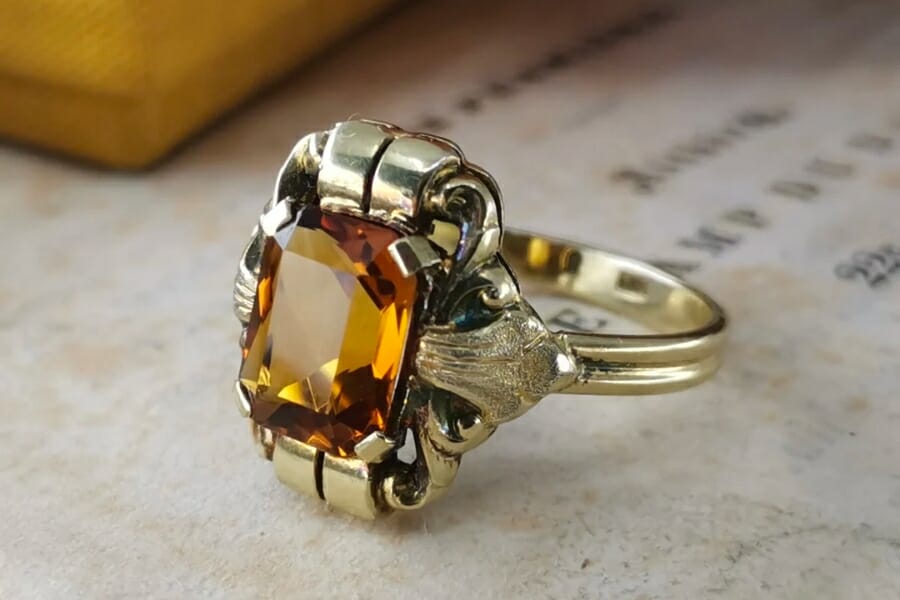
To get an appraisal on your Citrine, keep these important things in mind. First and foremost, it’s essential to work with a reputable appraiser who has experience working with gemstones. Look for an appraiser who’s accredited by a professional organization, such as the International Society of Appraisers or the Gemological Institute of America.
Before getting your Citrine appraised, make sure you have as much information about it as possible, including its origin, carat weight, and any known treatments or enhancements. This will help the appraiser accurately assess its value.
It’s also a good idea to have a realistic idea of what it might be worth. While Citrine can be valuable, it’s not typically as expensive as other gemstones like diamonds or sapphires. Don’t be disappointed if the appraisal comes in lower than you were expecting.
Finally, if you plan on selling your specimen, make sure to shop around to multiple buyers to get the best price. Don’t be afraid to negotiate, but also be aware that some buyers may offer lowball prices. That’s why, ultimately, the best way to ensure that you get a fair price for your Citrine is still to work with reputable dealers and appraisers who can provide you with honest and accurate information.

